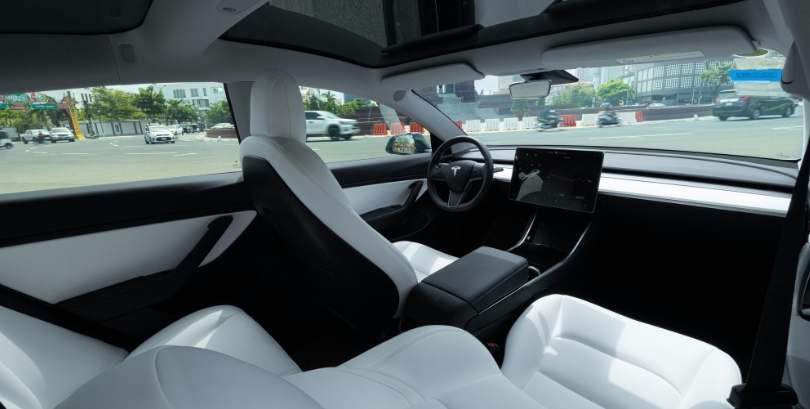Internet of Things
Connected Device Ecosystems: How Telecom Leaders Are Building Platform Futures

The most radical transformation for the telecom industry since the beginning of the smartphone era is underway. Connectivity alone is no longer the product; it’s the platform. In a time of accelerating digital innovation, telcos are moving beyond infrastructure to create connected device ecosystems that embed data, services, and intelligence into each layer of business and society.
From smart cities and autonomous vehicles to industrial IoT and wearable tech, telecom leaders are redefining how value flows across connected networks. Gone are the days when bandwidth was the competitive edge; the new edge lies in the ability to orchestrate millions, if not billions, of connected devices into seamless, intelligent ecosystems.
ALSO READ: The Role of Smart Homes in Workforce Productivity
The Rise of the Connected Device Economy
The global connected device market is growing at an unprecedented rate, with over 29 billion connected devices worldwide expected by 2030, according to GSMA Intelligence, with telecom operators at the heart of this revolution.
This explosion of connectivity represents not only an uptick in the number of devices but also an opportunity for new business models. Telecom firms are in the process of evolving from service providers to digital enablers, connecting things that collect, share, and act on real-time data.
These data streams fuel predictive maintenance for factories, optimize logistics fleets, and serve health monitoring systems, reinforcing at every turn telecom’s role as the backbone of the connected economy.
Building Platform-Based Ecosystems
In the connected era, the key to success is platformization: no longer just offering SIM cards and subscriptions, but an integrated suite of digital ecosystems where connected devices interact with each other, exchange data, and provide insights.
Operators nowadays provide scalable infrastructure through cloud-based platforms and edge computing that allows enterprises to manage their device networks efficiently. These platforms don’t just connect things; instead, they unify connectivity, computing, and analytics to deliver end-to-end value.
For instance, leading telecoms are collaborating with automotive and manufacturing firms to develop connected device hubs by integrating 5G, IoT, and AI. These hubs convert the data from sensors and devices into actionable intelligence, enabling real-time decision-making.
Monetizing Data Through Intelligent Connectivity
In the platform economy, data is the new revenue stream. Every connected device — be it a smart meter, wearable, or sensor — generates data that telecoms can help monetize.
The anonymized device data is being turned into a source of continuous value — as analytics-as-a-service or, alternatively, as data marketplaces — by the telecoms. In turn, this shift allows telecom leaders to transition from transactional revenue models to recurring, insights-driven growth.
With 5G networks, this potential is further amplified by the ultra-low latency communication it allows. This brings real-time data collection and processing into commercial reality. To C-suite executives, this means that telecom operators are no longer utilities; they are strategic partners in digital innovation.
Security and Trust: The Basis of the Connected Future
As billions of devices come online, cybersecurity becomes mission-critical. The complexity of managing connected devices across multiple platforms introduces significant vulnerabilities.
Meanwhile, telecom leaders are responding with security-first architectures, such as network slicing, zero-trust frameworks, and AI-based threat detection for the safeguarding of data flowing in the ecosystem.
Indeed, building trust is about compliance, but it’s also part of brand credibility. In times when data has been both an asset and a liability, only those telcos that can institute secure connectivity will emerge with long-lasting customer loyalty and the confidence of regulators.
The Leadership Imperative: Redefining Value Creation
For today’s telecom executives, leadership in the connected device era means a different kind of strategy-one that shifts from network operations to value orchestration. The focus must shift away from connecting endpoints to the curation of ecosystems that can harness innovation at scale.
Forward-thinking leaders are already:
- Invest in AI-driven enablement platforms for real-time analytics
- Forming alliances across industries with players in automotive, healthcare, and manufacturing
- Monetizing data through open API ecosystems and IoT marketplaces
- Embed sustainability metrics into connected device infrastructure to achieve ESG goals
This is much more than digital transformation; it is platform leadership where the telcos become the architects of an intelligent, connected world.
In Summary
The future of telecom does not lie in the selling of connections; it lies in enabling intelligence. Here, mastering ecosystems of connected devices places telco leaders at that coveted juncture of data, innovation, and human experience.
Every connected device — from the smart watch on a wrist to the sensor in a self-driving car — is a node in a vast network of opportunity. For telecoms, orchestrating that network is the ultimate strategic advantage. It’s a future that belongs to those who will be able to connect not just devices but value.
Tags:
Connected DevicesInternet of ThingsIoT ConnectivityIoT PlatformsAuthor - Samita Nayak
Samita Nayak is a content writer working at Anteriad. She writes about business, technology, HR, marketing, cryptocurrency, and sales. When not writing, she can usually be found reading a book, watching movies, or spending far too much time with her Golden Retriever.


